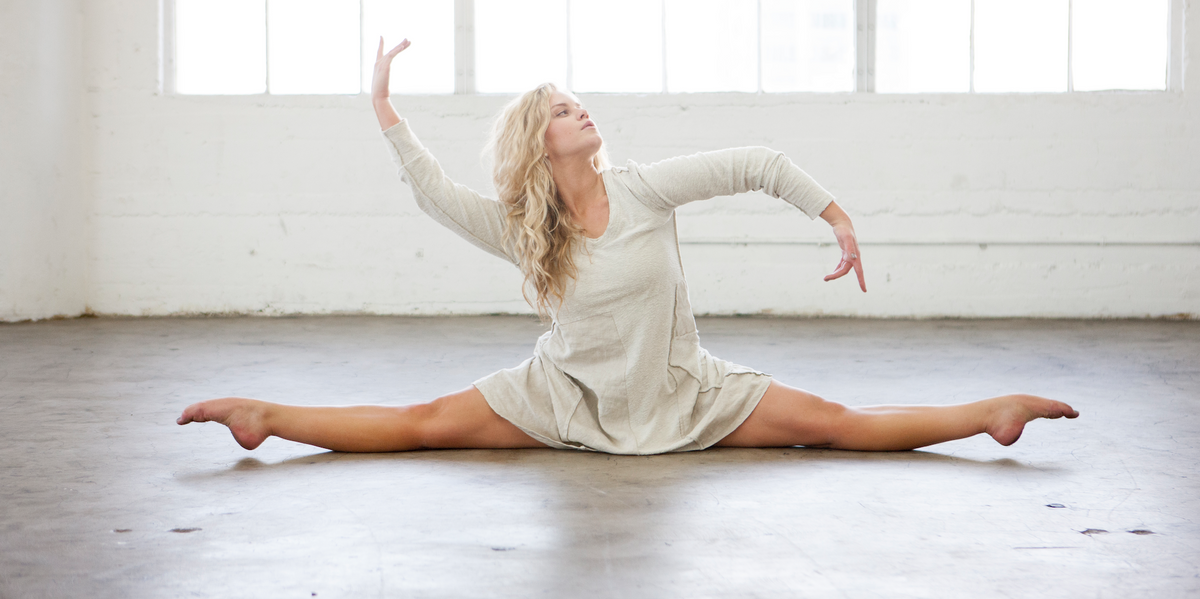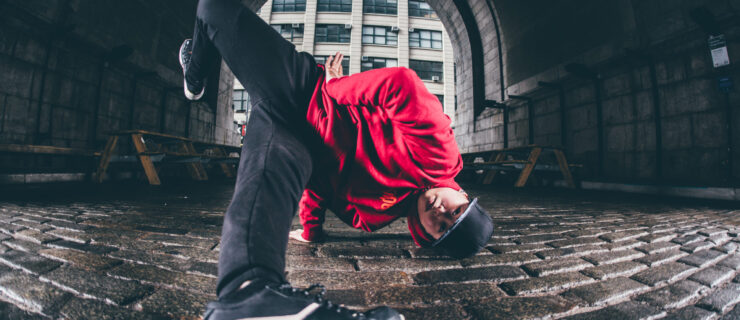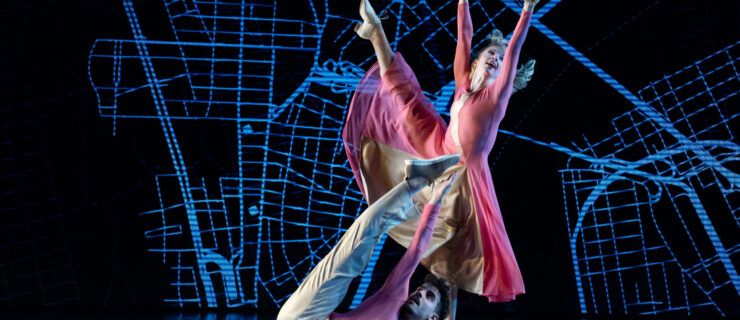How My Dance Training Is Getting Me Through the Hardest Experience of My Life
The stage was spinning.
The whole theater was swirling before my eyes, and nothing made sense.
I forced myself to push through the familiar choreography, which by then was in my muscle memory, feeling entirely disoriented. Up was down and down was up. Something was very wrong.
The curtain closed on the final night of Odyssey Dance Theatre’s 2012 Thriller season, and my nightmare started.
 Kati Ellis Photography (courtesy Ellis)
Kati Ellis Photography (courtesy Ellis)
Fast forward five years, 20 doctors, one Lyme disease diagnosis, and hundreds of doses of intense IV antibiotics later, and I’m an intern writing for Dance Spirit, telling you about how my dance training is getting me through the hardest experience of my life.
A crash course on Lyme: Lyme disease is a tick-born illness that wreaks havoc on the human body. It can be a difficult disease to diagnose if you don’t catch the tick on your skin, or find the bullseye rash it leaves on your body—and according to the International Lyme and Associated Diseases Society, only 50% of patients ever catch a tick or see a rash. The longer you have the disease without treating it, the harder it is to cure. (Which made it particularly unfortunate that it took me a year and a half to get diagnosed.)
For the past five years, I’ve lived with near-constant migraines, brain fog, forgetfulness, and confusion. Nausea and fatigue cloud every experience, and treatment makes every symptom more intense. Sadly, dancing has been out of the question.
I’ve been devastated. There’s really no other way to say it. But amidst that utter devastation, I’ve come to find an inner strength, born out of a lifetime of dance training.
Here are the lessons dance taught me that helped me get through my hardest days.
1. You’re tougher than you think you are.
As a dancer, there are so many rehearsals where you’re certain you can’t make it through another run—times when the exhaustion hits so hard it feels like your chest might burst.
Then your director yells, “One more time!” And you’re back on the dance floor pouring every part of yourself into the piece again. You always have one more run in you, even when you think you don’t.
During treatment, I often find myself at this same breaking point. I’ve been receiving heavy doses of powerful antibiotics and other medications through a catheter in my chest, called a tunneled PICC, which stays in my body for the duration of each round of treatment. Though the antibiotics are helping me heal, they also start a chain reaction that makes all of my symptoms intensify. Sitting through treatment is a test of my endurance, and then when I leave the doctor’s, getting through the day becomes a game of managing a thousand obstacles. I sometimes feel certain that I can’t handle one more needle, one more IV, or one more pill.
But then I remember what I learned in dance class all those years ago. I always have one more run in me. I’m tougher than I think I am.
 My tunneled PICC catheter (Taylor Jarman, courtesy Jarman)
My tunneled PICC catheter (Taylor Jarman, courtesy Jarman)
2. Be patient and the growth will come.
As a young ballet student, I was often frustrated by how slow my progress seemed to be. I would ask my teachers why I wasn’t improving, and they’d inevitably tell me to be patient. They were right. You can’t always see the progress you’re making in the moment. But no matter how delayed it may feel, the growth always comes.
When it comes to treating chronic illness, the timeframe for healing can be excruciating. Immediate results almost never occur. In the moments when I’m feeling my most dejected, I remember the things my dance teachers taught me. In subtle ways, I see aspects of my health improve year by year. Lyme disease is taking its time on me, but the growth is coming.
3. Art makes things better.
Since I was a little girl, dance was the one thing that could make a tough day better. If I needed to work through some tricky emotions, or deal with a hard situation, I would dance it out. My problems weren’t necessarily solved, but things invariably improved.
Now, even though I can’t physically dance, dance is still my saving grace on my very worst days. Whether I’m teaching younger dancers or watching other performers light up the stage, art makes things better. Dance helps us feel a little less lonely—and reminds us to believe in the good things to come.
4. The Strength Comes After the Challenge
Nobody is born a professional dancer. Every student has to go through a significant amount of pain and suffering both physically and emotionally in order to reach their own personal best. That pain is the space in which a dancer becomes an artist. After pushing through the most difficult rehearsals on the most emotionally taxing days, we blossom.
Just as my most challenging days in the studio brought forth some of my most exciting artistic breakthroughs, struggling with Lyme disease has allowed me to become a more complete person. I am more durable and capable than I ever thought possible. The strength truly does come after the challenge.
 Getting an IV (Taylor Jarman, courtesy Jarman)
Getting an IV (Taylor Jarman, courtesy Jarman)
5. “We Stand on the Shoulders of Giants” – Bernard of Chartres
No professional dancer makes it on her own. Each one is the product of her teacher’s commitment, her dance friends’ loyalty, her studio owner’s investment, her choreographers’ passion, her parents’ financial support and encouragement, and her own self love. Dancers become dancers only when many people work to make it so.
Treating Lyme disease is no different. Any progress I make in my healing comes thanks to the support of my parents, doctors, friends, faith, fellow chronic illness warriors, siblings, extended family, dance students, college professors, employers, and more. I am grateful to dance for teaching me this before my illness. I get to get out of bed every morning because I stand on the shoulders of giants.
I’m so thankful for this art form. Dance really is one of the greatest life coaches. Remember the lessons it’s taught you the next time your world is turned upside down. It’ll help pull you through.
To hear about another dancer’s struggle with Lyme disease, and to get more information about Lyme,
click here.




